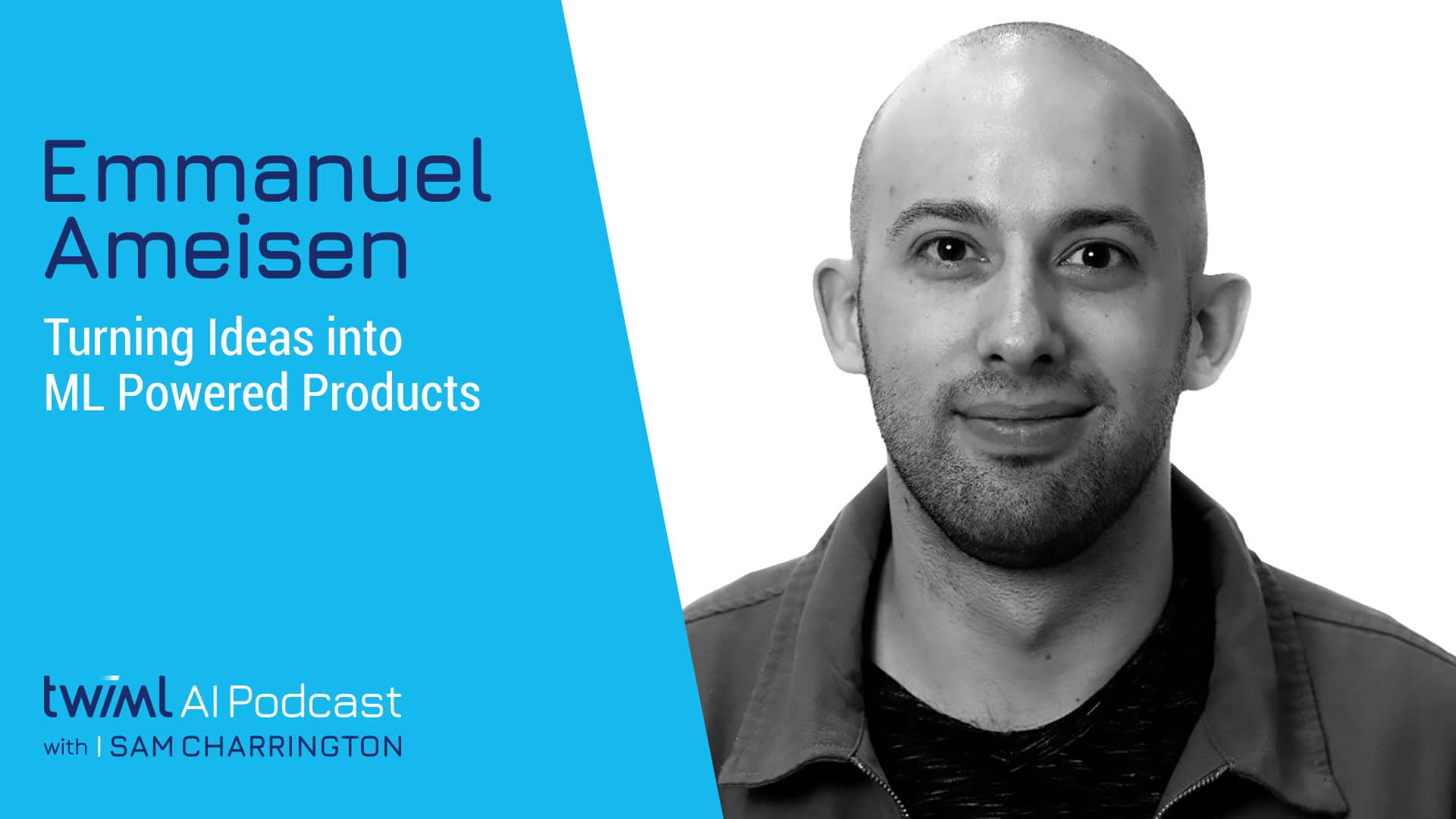
Join our list for notifications and early access to events
Have a great idea for a new machine learning-powered product or feature, but not quite sure all the steps to take to make your vision a reality? You are not alone! Many, even practicing data scientists and machine learning engineers or developers, struggle with putting together the pieces to go from idea to product. Fortunately, this week Sam interviews Emmanuel Ameisen, a machine learning engineer at Stripe, who just published a book on the topic — Building Machine Learning Powered Applications: Going from Idea to Product.
Emmanuel began his career as a data scientist and went on to mentor over a hundred Ph.D. fellows looking to transition into machine learning as an AI program lead at Insight Data Science. His new book is the culmination of what he learned, and provides a guide for aspiring and practicing engineers and data scientists on how to approach ML projects systematically.
Structuring End-to-End Machine Learning Projects
In this interview, as in the book, Emmanuel shares his best practices for structuring and building projects. Emmanuel approaches new ML projects in four main stages:
Emmanuel emphasizes the broader end-to-end ML process over just the raining of the model because the growing maturity of ML and AI tools has simplified that part of the process. "It used to be that training up a model was pretty hard, and you needed a team of people that understood the internals deeply, but now because the tooling has evolved so much...and the tuning is so good, and the courses are so good..., it becomes relatively simpler than the rest [of the process]."
To support the concepts taught in the book, readers are guided through the process of building a predictive text application that combines heuristics, rules, models and engineering work. Emmanuel had an extensive thought process behind choosing predictive texts as the best learning example: "Writing and assisting people to write better is a crucial example where you can check for grammar (that's just rules), or you can check for vocabulary or a variety of things, and you can also help them improve their style... So it was a nice blend that reflects what happens in the real world."
To further explore Emmanuel's take on building end-to-end ML pipelines to realize your ideas, be sure to check out the interview. We only scratched the surface in this article. And of course, we highly recommend the book, which is available here!
(You support the show by using our affiliate links to purchase your copy of the book.)